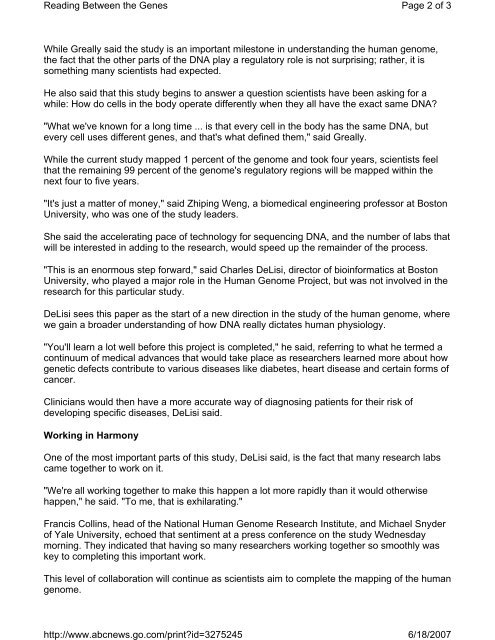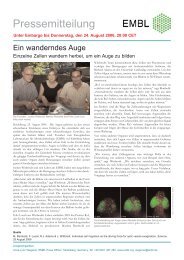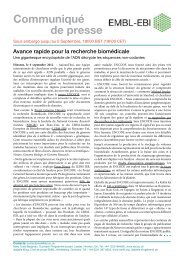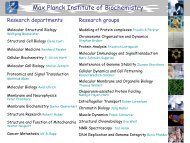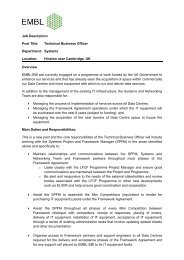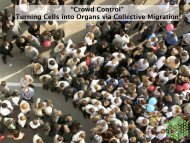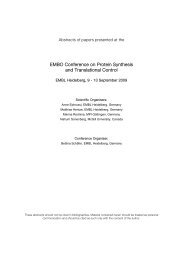Media Clips - EMBL
Media Clips - EMBL
Media Clips - EMBL
Create successful ePaper yourself
Turn your PDF publications into a flip-book with our unique Google optimized e-Paper software.
Reading Between the Genes<br />
While Greally said the study is an important milestone in understanding the human genome,<br />
the fact that the other parts of the DNA play a regulatory role is not surprising; rather, it is<br />
something many scientists had expected.<br />
He also said that this study begins to answer a question scientists have been asking for a<br />
while: How do cells in the body operate differently when they all have the exact same DNA?<br />
"What we've known for a long time ... is that every cell in the body has the same DNA, but<br />
every cell uses different genes, and that's what defined them," said Greally.<br />
While the current study mapped 1 percent of the genome and took four years, scientists feel<br />
that the remaining 99 percent of the genome's regulatory regions will be mapped within the<br />
next four to five years.<br />
"It's just a matter of money," said Zhiping Weng, a biomedical engineering professor at Boston<br />
University, who was one of the study leaders.<br />
She said the accelerating pace of technology for sequencing DNA, and the number of labs that<br />
will be interested in adding to the research, would speed up the remainder of the process.<br />
"This is an enormous step forward," said Charles DeLisi, director of bioinformatics at Boston<br />
University, who played a major role in the Human Genome Project, but was not involved in the<br />
research for this particular study.<br />
DeLisi sees this paper as the start of a new direction in the study of the human genome, where<br />
we gain a broader understanding of how DNA really dictates human physiology.<br />
"You'll learn a lot well before this project is completed," he said, referring to what he termed a<br />
continuum of medical advances that would take place as researchers learned more about how<br />
genetic defects contribute to various diseases like diabetes, heart disease and certain forms of<br />
cancer.<br />
Clinicians would then have a more accurate way of diagnosing patients for their risk of<br />
developing specific diseases, DeLisi said.<br />
Working in Harmony<br />
Page 2 of 3<br />
One of the most important parts of this study, DeLisi said, is the fact that many research labs<br />
came together to work on it.<br />
"We're all working together to make this happen a lot more rapidly than it would otherwise<br />
happen," he said. "To me, that is exhilarating."<br />
Francis Collins, head of the National Human Genome Research Institute, and Michael Snyder<br />
of Yale University, echoed that sentiment at a press conference on the study Wednesday<br />
morning. They indicated that having so many researchers working together so smoothly was<br />
key to completing this important work.<br />
This level of collaboration will continue as scientists aim to complete the mapping of the human<br />
genome.<br />
http://www.abcnews.go.com/print?id=3275245<br />
6/18/2007


